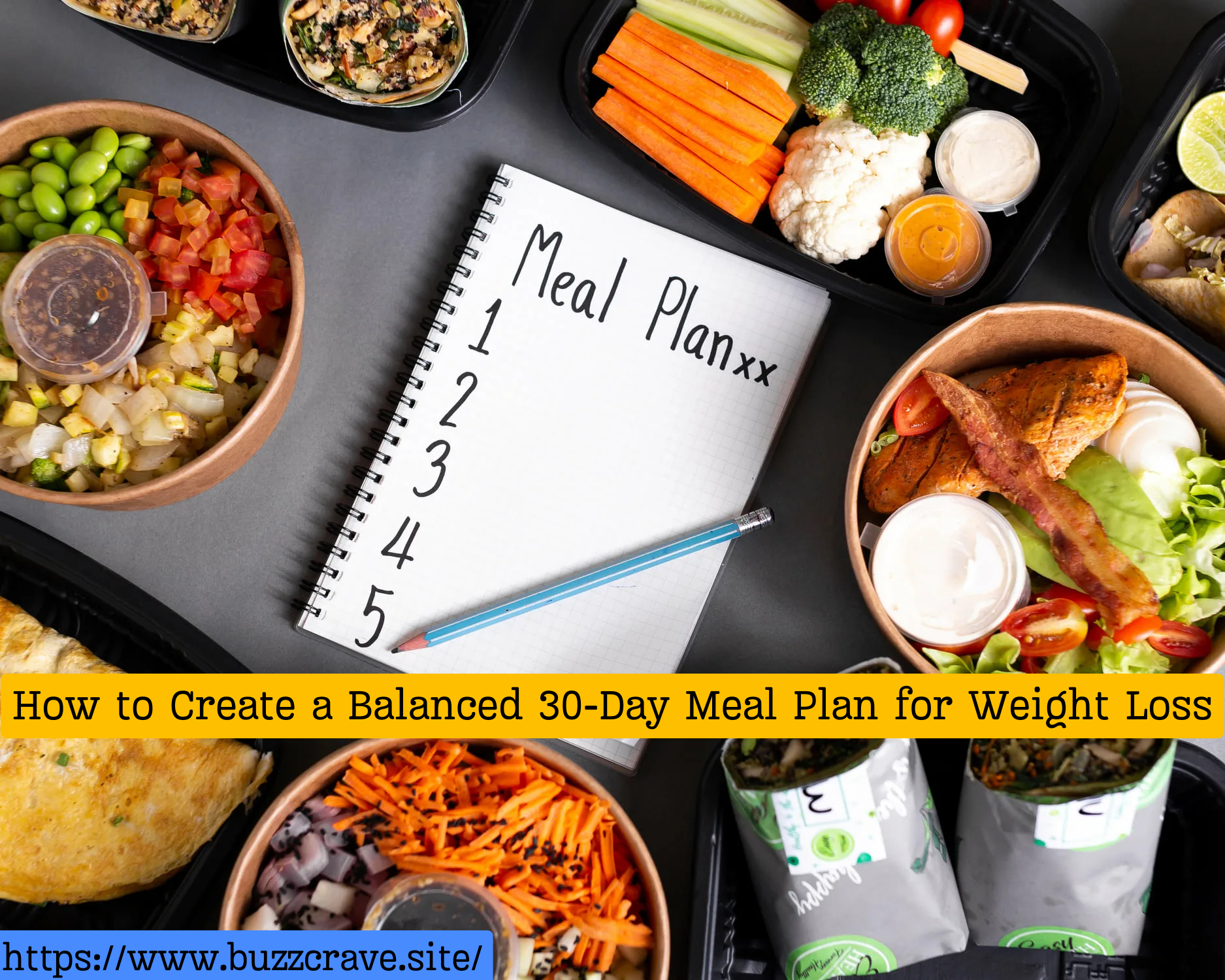Weight reduction and the maintenance of a new weight involves commitment and changing of one’s habits. The conventional method of shedding excess fats in the healthiest and safe manner is through balanced dieting. Having a plan worked out in advance of the 30-day plan makes it much easier to maintain healthy eating habits. This enables you develop a right diet by preparing foods that will assist you in your goal of losing weight.
A balanced meal plan is the process of increasing intake of nutrient-dense whole foods and decreasing portion size. It should include enough protein, fruits, vegetables, whole grain and essential fat to give your body the needed energy. Calorie shifting is in practice, a really simple technique that, DOH we are created properly will help people achieve their weight loss goals while never feeling hungry after every meal.
Here is a step-by-step guide to creating a balanced 30-day meal plan tailored for weight loss:
Learn How Many Calories You Need to Eat Each Day
The first thing that has to be considered when designing your weight loss meal plan is the amount of calories you are going to consume daily. This makes for moderate daily calorie restriction that will result into gradual and healthy weight loss without compromising on the health of the dieter.
The amount of calories required reduces as the weight and age of the individual increases and increases with height and activity level, information which is available freely on the internet in many calorie calculators indicating your daily calorie intake. In general, to achieve a goal of losing 1-2 pounds per week it is recommended to reduce daily calories by 500-1000 form the maintenance level.
However, it is dangerous to cut calories very low because this leads to malnutrition, muscle wasting and slowed metabolism in the long run. Its advisable to trim your daily maintenance calories by no more than 25 to 35 percent if you want to achieve lasting fat loss.
Prepare a List of Healthy Meals /Snacks
When you know the number of calories that you should be consuming each day, begin to decide on what foods you will be taking in the next one month. It is proposed to concentrate on the intake of at least recommended amount of lean protein, fresh produce, whole grains and healthier fats in every meal of the day.
Try to eat four to five meals, which should be portioned small and consumed at a regular interval to maintain the blood sugar level. Every meal should ideally contain a lean protein, vegetables or fruits and whole grains or starchy carbs. Some easy meal ideas include:
- Turkey wraps with veggies
Tuna salad with crackers and cukes.
There is chicken stir fry served with brown rice
Greek yogurt with berries and nuts
This one is simple – roast some salmon with sweet potato and green on it.
For snacks, use foods about 150 to 200 calories such as protein shakes, oatmeal, veggies with hummus, or chia seed pudding. Remember to read nutritional information on food packaging so that you can tell what you are consuming.
Stay Hydrated
Drinking plenty of water is very important when it comes to thinking about shedding a few pounds. Consume at least 8 glasses of water daily of which should be taken in proportion with the number of waking hours in the day. This not only helps in convenient consumption of water but also helps to maintain the benefit of carrying water. Other beverages that help to meet fluid requirements include: Soft drinks: such as mineral water, soda, sparkling water, Unsweetened tea and coffee: tea and coffee, and other natural liquids not containing sugar.
Get Plenty of Exercise
Together with your diet plan, make sure that you have adequate physical activity in a week for the purpose of enhancing weight loss. You should strive to achieve 150 – 300 minutes of moderate activities for instance brisk walking or cycling per week. Include 2-3 days of weight training on your plans to increase muscle definition and your metabolism rates.
Track Progress Wisely
Interacting with the scale frequently is even discouraging when you do not see the desired drop for two consecutive days. On weight, try to measure this only once a week in the morning after going to the washroom. Get body measurements too so that you know how you are shedding fat as you firm up. Document the data you collect to enable time comparisons on the level of implementation.
Make Any Needed Adjustments
Check on your rate of weight loss, energy and your hunger at the end of two weeks. If your calorie intake appears to be successfully reducing your weight on either of these extremes, add or subtract 100-200 in your diet each day. Also listen to hunger and fullness cues – being ravenous is not manageable in the long run. Adjust portion sizes or macronutrients while maintaining them either high, moderate, or low depending on goals.
Furthermore, replace every meal you don’t like with a meal you love eating to ensure that you eagerly consume every meal. The plan outlined here should be 30 days of about your preference so it is not hard to follow.
Conclusion
Getting professional nutritionist help and following a well planned 30-day meal plan eliminates uncertainties and stress in losing weight. It really helps to focus on an individual’s needs and wants and finding the specific calorie level and meals that will work best. Remember to drink water, do strict and perform necessary changes as per your plan. It will be possible to lose weight within the next 30 days in a safe and most efficient way if one is committed and a stickler to means.







0 Comments